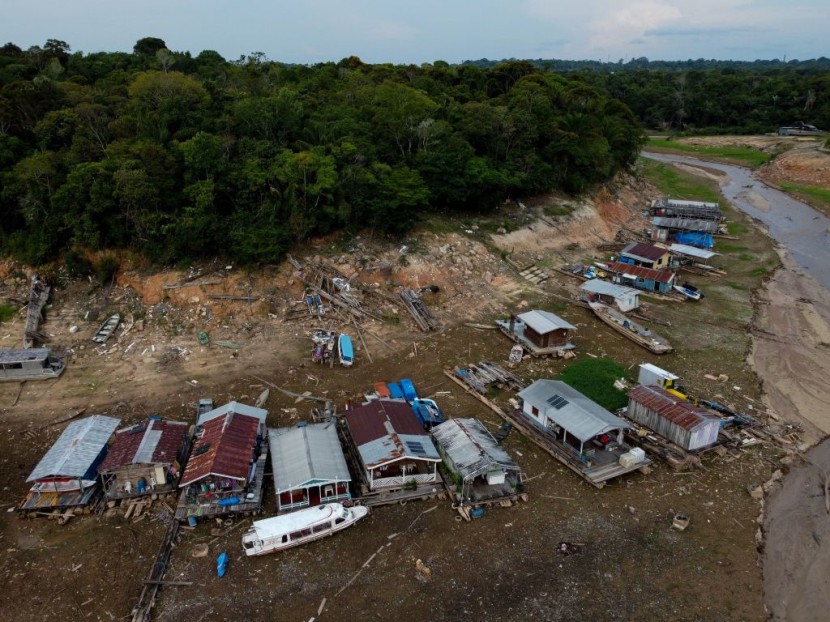
The Amazon's second largest tributary, the Negro River, reached its lowest level on Monday since official measurements started near Manaus more than 100 years ago.
Records also confirm that this part of the world's largest rainforest is suffering its worst drought, just a little more than two years after it experienced its most significant flooding. The water level in the morning in the city's port went as low as 13.5 meters, down from the 30.02 meters registered in June 2021, which was its highest level on record.
Amazon's Low Water Levels
The Negro River drains roughly 10% of the Amazon basin and is the world's sixth largest by water volume. Another main tributary of the Amazon, the Madeira River, has also recorded historically low water levels, causing the halt of the Santo Antonio hydroelectric dam, which is Brazil's fourth largest.
Throughout the Amazon, low river levels have left hundreds of riverine communities isolated and struggling to access safe and drinkable water. The drought had also disrupted commercial navigation that supplies Manaus, a city of roughly 2 million with a large industrial park, as per the Associated Press.
Additionally, the city is the largest city and capital of Amazonas, the state hit the hardest by the drought. Officials said that in late September, 55 of the 62 regional municipalities entered states of emergency due to the severe drought conditions.
In a statement, boatman Cledson Lopes Brasil said that there was no more water to go through and that navigation was at an end. He operates in Marina do Davi port, a getaway to dozens of riverine communities, some of which have sandy beaches that attract tourists. The previously bustling area was now surrounded by parched soil and many boathouses were left high and dry.
For the last month, Brazil has switched to a lower-powered boat better suited for operations on shallow waters. However, he was still unable to reach most communities along Taruma-Acu, a tributary of the Negro River.
Various Environmental Factors
The intense drought was caused by several months of no rain in the region and has contributed to record wildfires. According to CNBC, Brazil's National Institute for Space Research said that in the first 15 days of October, more than 2,900 wildfires have broken out in the Amazonas than any other October since 1998.
The Rainforest Foundation also noted that in the first half of this year, 3.6 million acres of the Amazon have been burned by wildfires. APIAM, an organization that represents Amazonian tribes, released a statement on Wednesday asking the government to declare a climate emergency to urgently address the vulnerability that Indigenous people are exposed to right now.
An Amazon rainforest villager, Pedro Mendonca, was relieved when a Brazilian NGO delivered supplies to his riverside community near Manaus late last week after suffering for months without rain. He said they have gone three months without rain in the community and noted that the current drought has been much hotter than previous ones, said The Guardian.
© 2025 HNGN, All rights reserved. Do not reproduce without permission.








